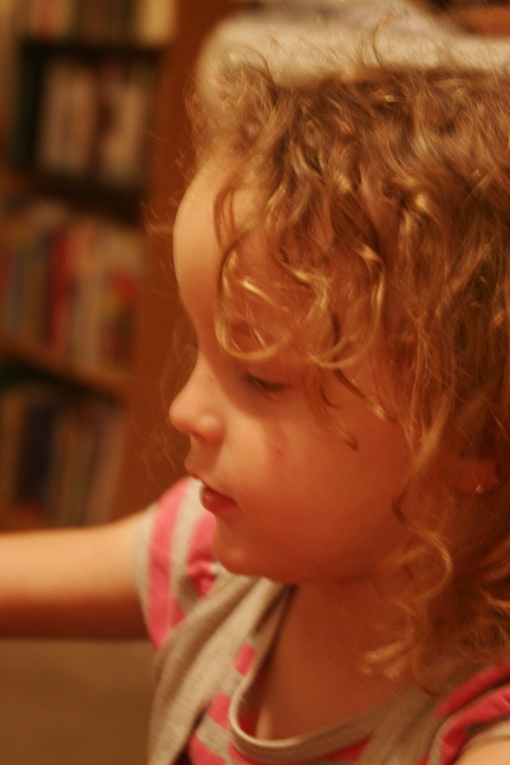
Photo by Juniper Spring Photography
A couple years at least I have been arguing with myself about education. On the one hand, what can leave a more lasting and powerful impact on your child’s development than the type of schooling she receives? Shouldn’t the selection of just the right match be a thoughtful, research and convictions-based process?
On the other hand, I think of myself and my sister (no comments about Brother), who went to your average, run-of-the-mill public schools all of our young lives, and seem to have gleaned a tremendous amount from the experience. We wanted to learn stuff, we were taught, and so we did learn. With no help from Montessori, Waldorf, Charter, Magnet, or any other hipster names in the schooling world.
Still, it would help to have a good, solid understanding of the different types of education programs and approaches out there, so that, given the choice, we could pick what we think best fits the needs and abilities of our munchkins. So, without further ado, here’s a brief description of the major types of schooling available (loosely organized by level of hippiness, interpret that as you will):
1. Public, standard edumacation
This is the default. Public education means that there are standards that must be followed, which is good, but also that most of the kids need to be able to meet those standards, bringing the standards down to ridiculous lows, which is bad. I am a product of public education, as many of the more brilliant people I know, so take it from the horse’s mouth: public schools can be home to talented teachers, great administration and support staff, and bright, enthusiastic students. The down sides everyone already knows, we hear enough about them on NPR.
2. Charter / Magnet schools
According to wikipedia , “Charter schools are primary or secondary schools that receive public money … but are not subject to some of the rules, regulations, and statutes that apply to other public schools in exchange for some type of accountability for producing certain results, which are set forth in each school’s charter.” For instance, the charter school my two little ones currently attend uses the relative freedom that it has from standard rules and regulations to place emphasis on a more hands-on, activity-based approach to education and learning. Also even in the pre-K classrooms, child initiative is regarded highly, and often the kids themselves are given the opportunity to decide where the class goes next and what they study. This approach of teacher-guided free exploration is emblematic of many alternative forms of education.
Magnet schools are also public schools which focus on a specific field of study or type of curriculum. They are often competitive, requiring entrance exams or auditions, or highly sought-after, with a lottery system in place to randomly select qualified students. The specific field of study may have an academic focus (ie. mathematics, language arts) or a vocational/technical/artistic focus.
3. Home-schooling
Home schooling takes on many forms of its own, but the underlying theme is that the individual parents and children are given much of the control over their education, and while there are some standards that need to be met, much can be included or excluded depending on the preferences of each individual family or group. The personalized approach allows parent/child teams to focus on areas where the child may be struggling or areas that are especially interesting to the child, and to breeze through the tasks that are easy and/or boring. Another benefit is that the home setting keeps the children from being negatively influenced at school by their peers (ie. peer pressure, violence, stereotypes, put-downs, etc.)
The difficulties of homeschooling revolve around creating opportunities for children to socialize with others, having enough discipline to learn and study daily, and for the parents, chiseling out a huge chunk of time to develop/follow a curriculum, plan activities, and teach their children. I can imagine homeschooling being very rewarding for some families (with stay-at-home parents) and virtually impossible for others, especially if both parents work full time.
4. The Montessori Method
The Montessori education system is based on teaching methods developed initially by Italian physician and educator Maria Montessori (1870-1952), and then by others following her lead. The main permise is that children are natural learners with a natural guiding force within them which helps them learn on their own, given the right circumstances. Typically emphasis is placed on initiative and freedom to explore, paired with a carefully crafted set of playing tools (open-ended units which can be manipulated in innumerable ways, driven by the imagination of the student) and teachers or “guides” who do more observing and re-directing than actual, direct teaching. The teacher may also show how each set of playing tools can be used. During a typical school day, young children rotate through several work stations (“work” because play is a child’s work), and the teacher facilitates the process.
On paper, this approach really appealed to me. But when I did come in to visit a Montessori pre-school to see how it plays out in practice, I was surprised by just how little interaction there really IS between the teacher and students. But what about circle time? What about teaching them stuff? I thought. It was then that I realized that I wasn’t quite as alternative as I thought I was…
5. Waldorf Education
While the Montessori approach may still focus heavily on academics and achievement in middle and high school years, Waldorf education moves even further from the Main Street of education, ending up on a fairy-dwelled cottage nestled in the rolling hills of Imagenaria. Incidentally, it is based on the work of modern Renaissance man Rudolf Steiner , who also founded a popular alternative agricultural method (biodymanics) and new philosophical/theological movement in the early part of the 20th century.
The Associate of Waldorf Schools of North America believes that “For the Waldorf student, music, dance, and theater, writing, literature, legends and myths are not simply subjects to be read about, ingested and tested. They are experienced. Through these experiences, Waldorf students cultivate a lifelong love of learning as well as the intellectual, emotional, physical and spiritual capacities to be individuals certain of their paths and to be of service to the world.” In other words, in a nut shell this is a holistic, arts-based approach to teaching and learning.
6. Unschooling
Yes! This is every child’s dream come true. And why shouldn’t their dreams come true? After all, isn’t dreaming important? And isn’t the joy of seeing those dreams come to fruition worth something?
Excitement put aside, this form of education has been gaining momentum as of late. Since unschooling aims to break out of the traditional mode of school and structured education per se, the term “unschooling” itself evades precise definition. Generally speaking, unschooling is letting the child learn while living life (and not going to school) in the family. This includes play, outdoor exploration, participating in family chores and activities, crafting and creating, and playing an active role in the local community. All concepts are learned hands-on, and of course, the learning is completely child-directed (see, I told you J). In my ideal world, this would be the ideal education. But in a world of deadlines, stress, and payments that binds us parents, this is an approach that is practiced only as an addition to a more structured, standard form of education, for fear that something vital would slip through the cracks if children were allowed to run wild. (Like, “oops, they’re ten and don’t know how to write yet….”)
Closing remarks
In a few days and weeks, we will have guests either blogging or interviewing here on Diem Dame, that are experts (parents, teachers, educators) on each of these forms of education. So stay tuned! And please, if you know of other movements in the education world that you’d like to share, or if you have personal experience with any of the above, feel free!
RESOURCES:he following books may be helpful in continuing the research for the ideal system and approach to education for your child:
– What Is Waldorf Education?: Three Lectures
– School As a Journey: The Eight-Year Odyssey of a Waldorf Teacher and His Class
– What is Montessori? A Basic Guide to the Principles, Practices, and Benefits of a Montessori Education
– How To Raise An Amazing Child the Montessori Way
– Teaching Montessori in the Home: Pre-School Years: The Pre-School Years
– The Unschooling Unmanual
– Radical Unschooling – A Revolution Has Begun
– The Ultimate Book of Homeschooling Ideas: 500+ Fun and Creative Learning Activities for Kids Ages 3-12
– The Well-Adjusted Child: The Social Benefits of Homeschooling
– Homeschooling for the Rest of Us: How Your One-of-a-Kind Family Can Make Homeschooling and Real Life Work
__________________________________________________________________________________________
If you use a different education system for your child, or a blend of the above, or if there are other great resources that you use / have used to develop your own teaching approach, I’d love to hear from you! Also, feel free to subscribe to this blog and join our growing community of thoughtful, artistic, mindful and a bit nutty parents and individualists!

































































